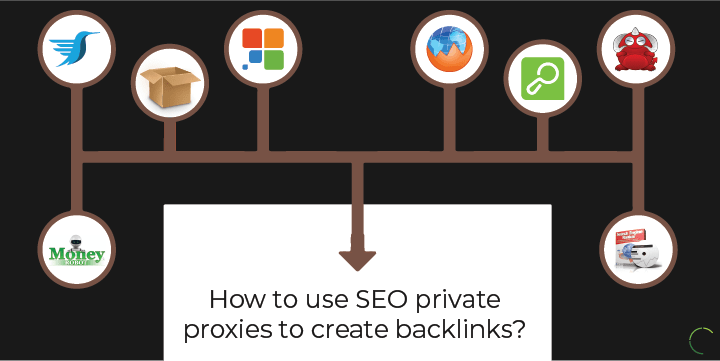
QUICK LINKS:
It is now the middle of the year 2018. The latest SEO trends or SEO techniques in Google algorithm, which remained as predictions at the beginning of the year, are now becoming clearer and more distinct. Voice search, mobile-first indexing, artificial intelligence, RankBrain, machine learning, high search personalization, among many others are emerging as areas of Google algorithm update 2018 where the trend is leading to.
In the past few years, Google had a lot of algorithm updates that shook the world of SEO, and there is a reason to believe that Google will continue doing the same. For now, however, it is clear that the things mentioned previously should be shaping every SEO strategy.
Mobile First Indexing Algorithm Update

Gary Illyes, the spokesperson for Google, has announced that mobile first indexing will be rolled out somewhere in 2018. However, mobile first indexing has been developing since late 2016.
What does mobile first indexing mean? This is a shift of Google’s search index wherein their algorithms will make use of the mobile version of a website to rank the website’s pages, to show snippets from the pages included in the result, and to understand structured data.
This is a great leap, and Google admitted in a November 2016 blog post where they talked about mobile first indexing. Below is a direct quote from that blog post:
“We understand this is an important shift in our indexing and it’s one we take seriously. We’ll continue to carefully experiment over the coming months on a small scale and we’ll ramp up this change when we’re confident that we have a great user experience. Though we’re only beginning this process, here are a few recommendations to help webmasters prepare as we move towards a more mobile-focused index.”
On March 26, 2018, Google announced that they have “started migrating sites that follow the best practices for mobile-first indexing.” And they will continue doing the same for other websites.
What does this mean for SEO?
If the website is responsive or dynamic and most web contents are equivalent for both mobile and desktop, then there is no need to update.
However, if the website’s configuration makes the content different for mobile and desktop, then changes have to be made in order for the website not to be left out by the mobile first indexing implementation.
Google is encouraging webmasters to make website contents mobile-friendly. Contents that are mobile-friendly perform better for users who are searching using their mobile devices. And why wouldn’t webmasters do exactly that when figures show that around 50% of traffic come from mobile devices?
Voice Search

A lot of traffic comes from mobile devices. And one-fifth of mobile searches on Google are voice searches, according to Sundar Pichai, CEO of Google. This trend is expected to grow as mobile usage continues to increase.
This makes perfect sense as people prefer to use voice searches while they are on the go, rather than typing their queries. Thrive Analytics has found out that although teenagers are the forerunners of voice search, people in other age groups are also using mobile assistants.
What does this mean for SEO?
The way to go is to optimize websites for voice search. Optimizing for voice search is very different in its own way because voice searches have unique characteristics. Thus, remember the following tips when optimizing for voice search:
Voice searches are longer compared to typed searches. People tend to ask mobile assistants, “How old is Morgan Freeman?” But on the search bar, people are more likely to type “Morgan Freeman age” only.
Voice searches mostly contain questions such as “Who is Brad Pitt?” and “Which gym is open today?”
With these characteristics in mind, keywords that are in question format is the best way to go. Also, make sure that the blog posts answer the questions of website visitors. To find out which question keywords are hot and trending, go to AnswerThePublic.com.
RankBrain and Search - Artificial Intelligence

In 2015, Google announced the existence of RankBrain which is an artificial intelligence system, which processes search queries. The Next Web described RankBrain like this:
“Think of Google’s algorithm as a machine trying hard to think like a human, using every possible piece of data – social, user generated, browser footprint, click patterns – at its disposal to match individual searchers to the best answers to their questions.”
And this is an apt description because according to Google, RankBrain processes a majority of search queries, and if it encounters an unfamiliar word or group of words, the machine will try to make a guess and come up with words or phrases that are similar.
What does this mean for SEO?
Google has made known that RankBrain is in the top three of the most important ranking signals. Therefore, webmasters must seriously think about optimizing for RankBrain.
Optimizing for RankBrain means that marketers must understand the context behind the searches or queries. What made users search for something? What pushed them to ask a question?
RankBrain may also be rendering long tail keywords useless, according to Brian Dean of Backlink. According to him, RankBrain actually knows and understands that the long tail keywords refer to the same things (this is why Google search results are almost identical). Brian Dean’s suggestion is for SEO to focus on medium tail keywords.
Interesting Read: THE 5 MOST COMMON MISTAKES MADE BY VETERAN INBOUND MARKETERS
Increase in Personalized SERPs

Although SERP personalization has been around since 2006 or 2007, it is continuously being enhanced such that Google’s algorithm in giving out search results would already take into account the user’s search history, local geography, activities, and interests.
This ultimately translates to a more personalized search experience for the user. With this sophistication, the search for “beauty salon near me” will surely turn up results that are relevant and useful to the user.
What does this mean for SEO?
The increase in personalized search results basically means that when somebody opens a website, that user will most likely see that website in the search results again. SEOs must understand that personalization is driven by location. Thus, marketers must make sure that their keyword tracking is set up by location.
A tool such as Rank Tracker can help marketers customize tracking by location. The tool can give out up to date results of users, giving the assurance of a more targeted result.
You could also check this SEO Checklist 2019.
In Conclusion
For sure, changes in Google algorithm will not stop this year or anytime. Google will continue to update and improve its algorithm, thereby changing the game of SEO constantly.
As of now and for the near future, websites that are mobile-responsive and voice search optimized are the way to go. The next year may bring another batch of algorithm updates that will change the trends of SEO once more.
The bottom line is that marketers must always be on the lookout for these changes, and they must be able to adapt to new trends, so as to have an edge over others.
Post Quick Links
Jump straight to the section of the post you want to read:


About the author
Rachael Chapman
A Complete Gamer and a Tech Geek. Brings out all her thoughts and Love in Writing Techie Blogs.
Related Articles
Proxies for Web Scraping With Puppeteer to Avoid IP Blocks
It’s frustrating to get blocked or blacklisted while scraping as it slows down your process, and in some cases makes your effort futile. Proxies for Web Scraping With Puppeteer to Avoid IP Blocks
5 Tips for Selecting SEO Rank Tracking Tools
Selecting rank tracking tools is one of the first steps in reaching SEO goals and metrics. Here are 5 Tips in Selecting SEO Rank Tracking Tools.